Search results for shiva samhita (15)
SHIVA-SAMHITA
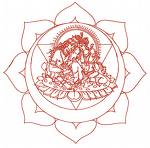
Nach Hatha-Yoga-Pradipika und Gheranda-Samhita zählt die Shiva-Samhita („Shivas Sammlung“) zu den wichtigsten Hatha-Yoga-Handbüchern. Sie beinhaltet 645 – Strophe in fünf Kapiteln hat deshalb besonderen Wert, da sie philosophischen Fragen ausführlich Rechnung trägt. Ihre Entstehungszeit ist unbekannt, doch scheint sie ein Werk des späten 17. oder frühen 18. Jahrhunderts zu sein.
Yoga & Buddhism: Similarities & Differences
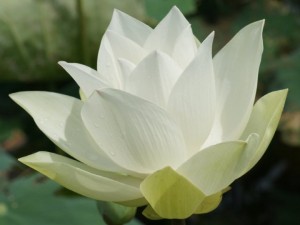
> TYS – Hindu, Buddhist, Jaina Yoga <
Yoga (Sanskrit, PÄ�li: योग yóga) refers to traditional physical and mental disciplines originating in India. The word is associated with meditative practices in Hinduism, Buddhism and Jainism. In Hinduism, it also refers to one of the six orthodox (Ä�stika) schools of Hindu philosophy, and to the goal toward which that school directs its practices. In Jainism it refers to the sum total of all activities—mental, verbal and physical.
Major branches of yoga in Hindu philosophy include Raja Yoga, Karma Yoga, Jnana Yoga, Bhakti Yoga, and Hatha Yoga.Raja Yoga, compiled in the Yoga Sutras of Patanjali, and known simply as yoga in the context of Hindu philosophy, is part of the Samkhya tradition. Many other Hindu texts discuss aspects of yoga, including Upanishads, the Bhagavad Gita, the Hatha Yoga Pradipika, the Shiva Samhita and various Tantras. Read More: > HERE <
Yoga and Buddhism: Similarities and Differences
Written by Dr. David Frawley
Yoga and Buddhism are sister traditions which evolved in the same spiritual culture of ancient India. They use many of the same terms and follow many of the same principles and practices. For this reason it is not surprising that many of us born in the West, particularly after an initial exposure, are apt to regard Yoga and Buddhist teachings as almost identical.
We may want to combine their teachings or practices accordingly, as if there were no real differences between them. The differences that have existed between the two systems historically, which have kept them apart as separate traditions, are less obvious to us in the West than are their commonalities. Or those who study one of these traditions may be inclined to see the other as a borrowing from it. Those who study Buddhism may find so much similarity in Yoga that they suspect a strong Buddhist influence on Yoga. Those who study Yoga may find so much similarity in Buddhism that they see a strong yogic influence on Buddhism.
However, the tendency to find commonality between these two great spiritual traditions is not limited to the West. Swami Vivekananda, the first great figure to bring Yoga to the West, examined the Buddhist Mahayana scriptures (Sutras) and found their key teachings and those of Vedanta that he followed to be ultimately in harmony. In recent years with the influx of Tibetan refugees into India, including the Dalai Lama, there has been a new dialogue between the two traditions that is bringing about greater respect between them. Tibetan Buddhists often appear at Hindu religious gatherings and partake in all manner of discussions.
Nor is the attempt to connect the two traditions limited to modern times. Various synthetic Hindu-Buddhist teachings have existed through history. Buddha himself was born a Hindu and some scholars have argued that Buddhism as a religion apart from Hinduism did not arise until long after the Buddha had passed away. A Shiva-Buddha teaching existed in Indonesia in medieval times, and for many Tantric Yogis it is difficult to tell whether they were Hindus or Buddhists. Buddha became accepted as an avatar of Vishnu for the Hindus during the medieval period, and most Hindus still consider that we live in the age of the Buddha-avatar. Most Hindus accept Buddha as a great teacher, even if they do not accept all Buddhist teachings. Full Article: > HERE <
- Meet Buddhism studies, groups, friends, at fb <
- Meet Hinduism studies, groups, friends, at fb <
- Meet Jainism studies, friends, fans, at fb <
- Meet Dr. David Frawley, AIVS, studies, friends, at fb <
- Meet Traditional Yoga Studies, friends at fb <
Save Biodiversity – Herbs & Food Regulation

www.gmcontaminationregister.org www.un.org/humanrightsday/2010
www.anh-europe.org/freedom-health-choice
www.saveourherbs.org.uk/Petition.html
The Traditional Herbal Medicinal Products Directive, 2004/24/EC, was established to provide a regulatory approval process for herbal medicines in the European Union (EU), and came into force on 30 April 2004 . Previously, there was no formal EU wide authorisation procedure, so each EU member stated regulated these types of products at the national level. Under this regulation, all herbal medicinal products are required to obtain an authorisation to market within the EU. Those products marketed before this legislation came into force can continue to market their product until 30 April 2011, under the transitional measures defined in the Traditional Herbal Medicinal Products Directive. Once this time limit has expired, all herbal medicinal products must have prior authorisation before they can be marketed in the EU. Read More: > HERE <
Ayurveda (Sanskrit: आयुर्वेद; Ä�yurveda, the „science of life“) or ayurvedic medicine is a system of traditional medicine native to India and practiced in other parts of the world as a form of alternative medicine.In Sanskrit, the word ayurveda consists of the words Ä�yus, meaning „longevity“, and veda, meaning „related to knowledge“ or „science“.Evolving throughout its history, ayurveda remains an influential system of medicine in South Asia.The earliest literature on Indian medical practice appeared during the Vedic period in India.The Suśruta SaṃhitÄ� and the Charaka SaṃhitÄ� were influential works on traditional medicine during this era.Over the following centuries, ayurvedic practitioners developed a number of medicinal preparations and surgical procedures for the treatment of various ailments and diseases. Read More: > HERE <
Health Choice – Have you heard the hype about future restrictions on natural health products? Find out how the ‚boil-the-frog-slowly‘ method masterminded by governments and transnational corporations is out to restrict YOUR FREEDOM OF CHOICE in the area of natural healthcare.
Read on…… find out here what’s really going on. This is about your future, and that of the next generation. Where in the world are restrictions most imminent?
> European Union (EU) – Canada – United States of America (USA) – New Zealand <
As a consequence of moves to harmonise global food laws, concerted attempts to control consumer access to natural heath products are being made by governments and trans-national corporations.
At a global level the regulatory framework is being developed through the Codex Alimentarius Commission (see our Codex campaign page).
The system of control essentially moves natural health products from a category of food to products requiring pre-market authorisation, where the authorisation systems being used or proposed are very onerous and so lock out large numbers of products (e.g. around 50% of pre-2004 products in Canada).
All this is being enacted under the often conflicting guises of ‘consumer protection’ and ‚free trade‘, nearly always creating a situation where big business gets what it wants while our freedom to choose natural health products is dramatically curtailed.
Inappropriate EU legislation could effectively steam-roller ancient and effective medicine cultures, such as Ayurveda, out of existence.
Certain combinations of herbal products, and those containing significant levels of vitamins and minerals, will be prohibited.
The EU’s Human Medicinal Products Directive (HMPD), issued ostensibly to protect consumers from medical disasters such as the thalidomide tragedy, now has a scope so broad that it can be used to classify certain foods, herbs and nutrients – even water – as drugs.
Many herbal products would be evaluated by inappropriate pharmaceutical criteria, rather than by practicing medical herbalists and others with specific expertise in the field of traditional medicines.
The cost of complying with these pharma-friendly criteria will be prohibitively expensive for many small to medium size enterprises and there could be serious consequences for small herb-producing farmers and communities in non-EU countries.
As you may know The Traditional Herbal Medicinal Products Directive 2004/24/EC (THMPD) of the European Union will have long-term and far-reaching implications for Ayurveda and other Traditional Systems of Medicine (TSMs), specially for the manufacturers and practitioners of these systems. / Senate Bill S510 Makes it illegal to Grow, Share, Trade or Sell Homegrown Food — Section 510(k) and the device approval process. Food Freedom warns about the consequences from this bill.
Jede(r) von uns benutzt im täglichen Leben Heilpflanzen in Form von Tees, chinesische, ayurvedische Mittel, Kräutermischungen etc. Dies soll alles verboten werden! Lest selbst: Ab April 2011 soll das Gesetz für Nahrungsergänzungsmittelund Heilkräuter (THMPD – Traditional Herbal Medical Product Directive) EU-weit durchgesetzt werden.
Das bedeutet:Die auf Teemischungen basierende Kräuterheilkunde wäre dannwahrscheinlich um die Hälfte der dort eingesetzten Kräuter beraubt, da es wenig „wissenschaftliche Forschung“ über gebräuchliche, einheimische Kräuter gibt und diese dann ohne aufwändige Forschung keine Zulassung alsArzneimittel bekämen.
Fast alle chinesischen und ayurvedischen Heilpflanzen und ein guter Teil der europäischen Heilpflanzen sollen mit dieser EU-Novelle verboten undaus dem Handel genommen werden.
Die Gründe liegen auf der Hand: Die Pharmaindustrie hätte dieNaturheilkunde „Schachmatt“ gesetzt und könnte diesen wachsenden Marktfür sich übernehmen.Jetzt sind wir alle gefragt und können noch Einfluss nehmen.In Deinem, Ihrem, Eurem und unserem Interesse.

www.sourcewatch.org/Global_Corporations
-
www.abtei-st-hildegard.de ( WHO owns Hildegard ? )
Natha Yogis, Gorakshanath & Kashmir Shaivism
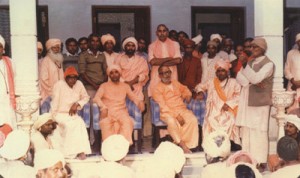
Mela 1985: babaji ( sitting on extreme right), Shri Avaidya nath ji, Shri Chand nath ji
Kundalini Books: Siddha-Siddhantapaddhati of Goraksanatha
Gorakshanath the Originar of Hatha-Yoga
The Sanskrit word nÄ�thá or नाथ, is the proper name of a siddha sampradaya (initiatory tradition) and the word itself literally means „lord, protector, refuge“. The related Sanskrit term Adi Natha means first or original Lord, and is therefore a synonym for Shiva, Mahadeva, or Maheshvara, and beyond these supramental concepts, the Supreme Absolute Reality as the basis supporting all aspects and manifestations of consciousness. The Nath tradition is a heterodox siddha tradition containing many sub-sects. It was founded by Matsyendranath and further developed by Gorakshanath. These two individuals are also revered in Tibetan Buddhism as Mahasiddhas (great adepts) and are credited with great powers and perfected spiritual attainment. Read More: > Here <
Dr. Joachim Reinelt: Zur Zeit des indischen Mittelalters wanderten in weiten Teilen Indiens und Tibets tantrische Mystiker umher, die Nathas, Nathayogis oder Nathasiddhas genannt wurden. Sie praktizierten und lehrten Hatha- und Kundaliniyoga und hatten großen Einfluss auf das religiöse Leben der Menschen.
In meiner Doktorarbeit habe ich die Lehren und Praktiken dieser Yogis untersucht. Als Textgrundlage dient hierbei ein Werk aus dem ca. 13. Jahrhundert, das Vivekadarpana, wörtlich ‚Spiegel der unterscheidenden Betrachtung‘. In diesem recht umfangreichen Werk (21 Kapitel) wurden die Lehren aus unterschiedlichen philosophischen Schulen, Konzepte und Praktiken diverser tantrischer und yogischer Traditionen, sowie viele mythologische Vorstellungen zusammengetragen. www.proyoga.de
Gorakshanatha Saivism: Gorakhnath or Gorakshanatha Saivism is also known as Siddha Siddhanta and Nath tradition. It was founded by Gorakshanatha (Gorakhnath) who lived about 10th century AD. He is believed to be 3rd, 4th or 5th in a line of 12 prominent teachers of this tradition, which has followers in both Buddhism and Hinduism.
He was said to be a disciple of Matsyendranatha who was from in Nepal. Followers of this sect believe that knowledge of this tradition was received by Matsyendranath directly from Siva himself. Gorakshanatha is credited with such works as Siddha Siddhanta Paddhathi and Viveka Martanda. He composed them in Hindi. He also created 12 monastic orders across Northern India in an effort to preserve the Adinatha tradition. Other important works of this tradition are Hathayoga Pradipika, Gheranda Samhita, Siva Samhita and Jnanamrita. Full Article: www.saivism.net
History of the Nathas – The history of ancient Indian sadhu texts reveals a succession of several main groups. There were the Sadhs, Yatis, Siddhas, Nathas, Pashupatis, Sant-Mats, Dasnamis and Nagas. Apart from these, many small sadhu sects have existed and played their part in the great stream of Indian life. In early history, it would appear that some sects were interwoven with others, and some merged or developed into other sects. Some thus became extinct, and others are still with us.
Full Article : http://www.mahendranath.org/yogavidya/yogavidya.html
Address inquiries to:
INTERNATIONAL NATH ORDER
3005 S. Lamar Blvd. D109-387
Austin, TX 78704 (USA)
Yogendranath Yogi Event: „CHATUHSASTHI YOGINI MANTRA -64 KALI YOGINIS“: “Sixty and four are the instruments of enjoyments that tempt the individual soul (jiva). Sixty and four are the divisions (kalas) within jiva; Sixty and four are the chambers of jiva’s chakras; Sixty and four; where Shiva-Shakti are.” In very ancient days, eight great Female Goddesses Shaktis emerged from the cosmic soul of the Principle Dieties and formed Kali Durga, the Universal Shakti Power, These were the grand Mothers (Ashta Matrikas) of all subsequent Yoginis. According to Kaula Tantra, the seight manifested each in turn into eight Divine Shaktis, thus resulting in the 64 Tantric Yoginis.
- Start Time:Sunday, April 10, 2011 at 2:30am
- End Time: Friday, April 10, 2015 at 5:30am
- This is an open event. Anyone can join and invite others to join.
Eight Great Mothers (Ashta Matrikas), Halebid, Karnataka – An examination of the ancient Tantric tradition reveals a particular sanctity assigned to the number eight. The eight mother faculties (tattvas) of the manifested universe, the eight directions with four cardinal and four intermediate points (digbandahs), the eight miraculous yogic powers (siddhis), eight „limbs“ of Yoga (astanga) eight forms of the Divine Mother (matrikas) and eight primary mystic symbols (mudras) are just a few examples. The square of eight, or sixty-four, occupies an even more profound position in the field of Tantra which, from the point of view of the practitioner, first and foremost identifies the sixty-four Tantric Yoginis.
The Matrikas are found in inscriptions uncovered from the Indus Valley Civilization of 5000 years ago.
“O Great Ones, if I am known, what need is there for pilgrimage, austerities and even sadhana itself? If I am revealed, of what use is puja, tantra, kriya, yoga and the revealed texts?
My mystery is grand and broad and expansive beyond the consciousness of humanity, yet I am ever accessible as the cosmic lover beyond the thinking mind and it is I who is the source of the Peace, Light, Love, and Power that are all the hallmarks of my essence. I am the polarities and the forces of creation, the Divine feminine in union with her Lord. Manifesting in both celestial and terrestrial planes, pretending to be limited as a human incarnation, I become intoxicated with all aspects of life, in order to know Shiva as my intimate lover, with whom I always seek oneness.
I take on human incarnation in order that all of his less conscious manifestations might discover their divinity though relationship with me. In doing so I provide an avenue for humanity to taste the nectar of immortality through my Kaula Tantra. Even given this, my true nature still remains secret. I live hidden in the bodies of human lovers, promoting the elevation of consciousness for those who seek it through me.”
2nd Yogendranath Yogi Event „MAHA YOGI GURU GORKHNAHT“: Gorakshya Peeth Siddhachal Mrigasthali, favourite of siddha yogi -guru gorkhnath . Gorakshya Balam, Guru-sishya Palam, Sesha Himalam, Sasikhanda bhalam Kalasya Kalam, Jeeta Janma Jalam, Bandey Jatalam, Jagadabjanalam
- Start Time: Friday, April 8, 2011 at 8:00am
- End Time:Wednesday, April 8, 2015 at 11:00am
- This is an open event, everone can join
Gorakh Nath is also Known as Gorakshya Nath. He is the Yoga power of Lord Shiva, who himself is the whole universe. There are many meanings for the name. First let’s separate the name into smaller parts Go + Rakshya = Gorakshya
The meaning of Go are Cow, Earth (or universe) or the Indriya (Through which person interacts with the outer world also moha or attachment). The meaning of Rakshya is to protect.
The combined meaning becomes as such The one who protects us from the un-escapable net of moha by protecting the indriyas. When all the individual are protected from misutilizing their bodies, which develops the mind so much that we become able to know all the things in the universe, then the universe is protected as a whole.
He is the teacher of Yoga. Yoga means the re-unification of the soul and the super soul (himself). We cannot write about him due to our inefficiency. One of the slokas is listed below which tells something about him.
Tum Sata-Chita-Aananda Sada Shive, Aagama Nigama Parey Yoga Pracharana Karana Yuga Yuga, Gorakh Rupa Dharey You are the super being, Sada Shiva. Farther than the knowledge of Aagama and Nigama. You come here in the form of Gorakh Nath for preaching Yoga (Knowledge for reunification), time to time. The full Bhajan is given in the Bhajan segment of the site.
You can view the big poster of Navanath at Mrigasthali Gorakshya Temple Likewise, there are 84 siddhas. Temples in Nepal and the World – Oom Guru Gorakshya, Mama Rakshya Rakshya Gorakhnath Temple is everywhere in Nepal and India. Gorakshay Nath is very important in the lives of the people so the temple is found in every footsteps. In any urban and rural part of the subcontinent contains Gorakshya temple.
Mrigasthali is another important place for all the Hindus (www.omadesh.org) .It is Known to be the most favourite place for the Lord Shiva to play. This place is listed in uncountable places in the texts of hinduism.
Shiva Gorakshya Meditated at this place for very long time. According to the story, Shiva Gorakshya Meditated here seated on the snakes representing the rain and there was no rainfall for 12 years. He was not happy with the people who was not interested in improving their life with yoga.
The people who were tensed due to no rain thought to bring his Guru Dada Matsyendra Nath and he will wake up and the rain will fall. When they brought Guru Matsyendra Nath from Kamrup Kamakshya then he wake up from meditation and they got the rain fall.
Goraksha Puja // Pandit’s Genocide being completed by indifference of both Center and State Governments.
Yoga – Sanatan Dharma ( > Hinduism <) has always believed that the world began from the god in the form of zero (sunya rup paramatma). But how did that zero became all these? The science cannot explain that thing, yet it has proved that the world is continuously expanding. If it is expanding continuously, then it should have been started from a point or zero. The science also believe this, with Big Bang Theory. But how did something came out of nowhere? The science can never explain this. This is explained by Yoga.
Einstein believed that there is always another antiparticle to some particle. When antiparticle and particle mix together, then there will be nothing. One will consume the other and the whole thing is zero. This thought came out of the sacred texts of Hinduism.
Something out of nothing can come with the power of yoga. The literal meaning of yoga is to mix something together or addition. With the power of yoga, Shiva created the whole universe out of nothing. let us see this in the following table:
0 = 5 – 5
= (5) + (-5)
= ( 3 + 2 ) + (8 – 3)
= (9 – 6 + 4 – 2) + ( 5 + 3 – 5 + 2 )
= ………… and so on (This is addition or Yoga)
Now the world has become a complex one. When the maha-pralaya occurs, the addition occurs and the world again becomes zero, and the new world is started with new mathematics.
Yoga is not the exercise. It is the power of creation. The Rishis of older times developed the science by which anyone can increase the power of yoga within oneself. All the things in Hinduism, world and the universe is within this.
We have to travel through 8.4 million species of plants and animals to become human. We will be promoted or degreded to the next higher level according to our karma. Karma is the form of yoga (Karma-yoga) which increases the yoga power. Shree Shiva Gorakshya is known to be the first sat-guru of yoga. He is Shiva, who came to earth for reason of preaching the knowledge of yoga. He tought 8.4 million postures, by which yoga could be practiced. Among them 84 postures are the most important for Human.
We are trying to publish the 84 yoga postures which could be useful for anyone.
The Gorakhbodh
Questions (Diverse Fragen):
- CREATOR : Yogendranath Nath Yogi <
- EMAIL — yogendranathyogi@gmail.com
- Yogendranath Yogi – ( Ancient Original Natha Yoga) , friends, studies<
- Meet NATH YOGI SAMPRADAYA _ALL WORD <
- Meet YOGA OF NATHA SAMPRADAYA – MAHAYOGACHARYA GORAKHNATH <
- Meet SHRI 108 THANESHWAR NATH MAHAYOGI JAGRTH DHUNA <
- Meet Shri Thaneshwar Nath Namo, Gorakshnath <
Kashmir Shaivism: Kashmiri Arya „Pandits“ are the remainder of a indigenous religious ethnic group (kashmir shaivism philosophy) that originally inhabited the land proclaimed to be paradise by one of many neighbouring Kings . In the ancient times, the indigenous himalaya mountain Nag/“water spring“ tribe and Arya tribes settled and embraced eachothers rituals and values. The Middle ages, the various conquerors named the peoples of this valley as „Pandits“ because they choose the path of peace, enlightenment and knowledge. The Kashmiri Pandits, a „Community in Exile“ , not a caste in exile, retained their cultural identity from the persecution and forced conversion by the invaders of the land since 1300s. There are about 700,000 Kashmiri Pandits/Hindu living worldwide. About less than 5,000 still remain in the Valley of Kashmir. http://en.wikipedia.org/wiki/Kashmir , http://en.wikipedia.org/wiki/Azad_Kashmir
- www.shehjar.com Forgotten Temples of Kashmir <
- KASHMIRI OVERSEAS ASSOCIATION, USA <
- HUMAN UPLIFTMENT THROUGH KASHMIR SHAIVISM <
- Kathak Academy , Shehjar, Kashmir Poetry <
- Yoga Alliance Austria: BYO „Eintreten in das göttliche Bewusstsein“ <
- Yoga Vidya Journal Herbst 2004 < …Der Autor ist Gorak Natha. In einem Antiquariat in London konnten indische …. Lore Tomalla leitet bei Yoga Vidya folgende Seminare …
- Meet Kashmir Pandits, friends, fans, studies at fb <
- Meet Roots in Kashmir, friends, fans at fb <
- Meet Roots in Kashmir Youth worldwide (because Refugees), friends at fb <
- Meet KVKS Kashmiri Visthapit Kalyaan Samiti Health and Education at fb <
- Meet Kashmir Shaivism (Ancient Original Kashmir Yoga), friends and studies at fb <
Guru Shishya Tradition in Yoga, Veda, Arts
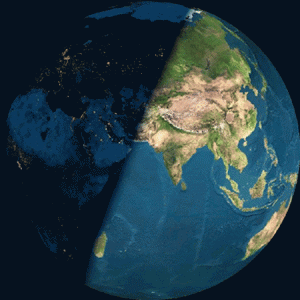
http://eastmeetswestmusic.com/
The guru-shishya tradition, lineage, or parampara, denotes a succession of teachers and disciples in traditional Indian culture and Dharmic Traditions such as Sanatana Dharma, Sikha Dharma, Jaina Dharma and Buddha Dharma. It is the tradition of spiritual relationship and mentoring in traditional Hinduism where teachings are transmitted from a guru (teacher, गुरू) to a ‚śiṣya‘ (disciple, शिष्य) or chela. Such knowledge, whether it be vedic, agamic artistic, architectural, musical or spiritual, is imparted through the developing relationship between the guru and the disciple. It is considered that this relationship, based on the genuineness of the guru, and the respect, commitment, devotion and obedience of the student, is the best way for subtle or advanced knowledge to be conveyed. The student eventually masters the knowledge that the guru embodies. The word Sikh is derived from the Sanskrit word shishya. It is related to the Brahmacharya. Read More: > Here <
Rashtriya Ayurveda Vidyapeeth was established on 11th Feb., 1988 with one of the objectives of promoting knowledge of Ayurveda and started functioning since 1991. The Vidyapeeth initiated the course of Member of RAV with an effort to revive the traditional method of Gurukula system of informal education of India i.e., Guru Shishya Parampara to Ayurvedic graduates after formal education. As people are aware, the present classical texts of Ayurveda, Charaka Samhita, Sushruta Samhita, Ashtanga Hridaya etc. are believed to be the outcome of such informal education. This kind of study is lacking at present in the modern educational institutions where the courses are bound by fixed syllabus, duration of time and many subjects to learn.
Guru Shishya Parampara is the traditional method of residential form of education wherein the Shishya remains with his Guru as a family member and gets the education as a true learner. This system gradually vanished with the disappearance of Gurukuls. However, it is still a very effective means of transfer of knowledge from the Gurus (teachers) to Shishyas (students). RAV is making efforts to revive the system through two types of courses.
In colleges and institutions only a relevant portion of the Samhita (texts of Ayurveda) is being taught in the form of syllabus. Guru Shishya Parampara of RAV facilitates the students to study whole text and get adequate knowledge of Samhita and its Teeka (commentary) and traditional skill for the Ayurvedic clinical practice. The Shishyas get sufficient time for interaction and discussion on the issues taken for study.
COURSES:
- (A)acharya guru shishya parampara, (One-year course of Member of Rashtriya Ayurveda Vidyapeeth) (MRAV)
- (B)Chikitsak guru shishya parampara, (One-year/Six month’s course of Certificate of Rashtriya Ayurveda Vidyapeeth) (CRAV)
- Read More: > HERE <
„The main features of a fruitful Guru-Shishya relationship led to (1) purity of mind and body, humility, a sense of service, and a devotional and spiritual attitude; (2) a thorough grounding of technique and science of music; (3) the gradual development of the disciple as he sits behind his guru at concerts and joins in when asked, but does not perform by himself until his guru finds him fit to do so; and (4) freedom from economic worries by the disciple, living and serving his guru, as a member of his family.“
Pandit Ravi Shankar (My Music, My Life)
PUBLICATIONS: Vidyapeeth has been publishing certain books of Ayurveda, which are found suitable for general public in creating awareness, and also books for Ayurvedic professionals. The Vidyapeeth also publishes the theses of its students after necessary review and recommendation by the Expert Committee and approval by the Governing Body. Further, the Vidyapeeth brings out a Souvenir, containing selected full papers, at the time of Conference/Seminar conducted every year.
SEMINARS/CONFERENCES: Vidyapeeth conducts a Conference/Seminar/Workshop every year on a topic that requires discussion and exchange of the views and clinical experience on the diagnosis and treatment of the disease, mostly the health problems not easily managed by majority of Vaidyas without side effects. So far Conferences/Seminars have been conducted on Kshara Sutra, Heart diseases, Ayurvedic Education, Training and Development, Nadi Vigyan, Fast Acting Ayurvedic Medicines and Techniques, Cancer, Shothahara Avam Jeevanu Nashak Ayurvedic medicines, AIDS, Thyroid disorders, Rasayana, Ayurvedic management of kidney and urinary disorders , Management of Hepato-biliary & Splenic disorders through Ayurveda, Diabetes Mellitus, Mental Health and Vatavyadhis.
AWARD OF FELLOW OF R.A.V.: For achieving one of its objectives, the Vidyapeeth awards Fellowship to the eminent scholars of Ayurveda and practitioners of various traditional Ayurvedic techniques in recognition of their scholarly expertise and contribution in the field of education, research, patient care and literature. In the year 1992 the Vidyapeeth awarded 50 Foundation Fellowships to eminent Vaidyas. Thereafter, a maximum of 30 fellowships are being awarded every year. This is an honorary recognition and a felicitation with a citation, a shawl and a kalash/memento presented to each awardee in the Convocation of RAV. As per rules of the Vidyapeeth, the total number of fellows at any time shall not exceed 300. Every year the Governing Body determines these fellowships on the basis of the bio-data of scholars. So far, 224 scholars have been awarded Fellow of Rashtriya Ayurveda Vidyapeeth (FRAV) Annexure – IV.
CONVOCATION: In order to fulfill the objectives of the Vidyapeeth viz. to institute due recognition to successful candidates and to recognize and encourage merit in various branches of Ayurveda, the Vidyapeeth holds Convocation every year for awarding certificates to passed out students and to felicitate eminent scholars and Vaidyas with Fellow of Rashtriya Ayurveda Vidyapeeth (FRAV) for their significant contribution for the progress of Ayurveda in the fields of education, research, literature and health care.
A guru (Sanskrit: गुरु) is one who is regarded as having great knowledge, wisdom and authority in a certain area, and who uses it to guide others (teacher).
In sanskrit gu means darkness & ru means light. As a principle for the development of consciousness it leads the creation from unreality to reality, from the darkness of ignorance to the light of knowledge. In its purest form this principle manifests on earth as a divine incarnation (saint), a person with supreme knowledge about God and all creation. Other forms of manifestation of this principle also include parents, school teachers , non-human objects (books) and even one’s own intellectual discipline.
The syllable gu means shadows
The syllable ru, he who disperses them,
Because of the power to disperse darkness
the guru is thus named.
– Advayataraka Upanishad 14—18, verse 5
In the religious sense the term is commonly used in Hinduism and Sikhism, as well as in Buddhism and new religious movements.
Finding a true guru is often held to be a prerequisite for attaining self-realization. Guru Nanak, founder of the Sikh religion said: „Even if a thousand suns and moons rose, they would be unable to remove the darkness of ignorance within the heart. This can only be removed through the grace of the Guru.“
„Guru“ also refers in Sanskrit to Brihaspati, a divine figure in Hinduism. In Vedic astrology, guru or Brihaspati is believed to exert teaching influences.[clarification needed] Indeed, in many Indian languages such as Hindi, the occidental Thursday is called either Brihaspativaar or Guruvaar (vaar meaning day of the week).
In contemporary India, Indonesia and the Philippines, the word „guru“ is widely used with the general meaning of „teacher“. Guru in Buddhism, Hinduism, Sikh…Gurukulam System in Tradititional KALARI… Read More: > HERE <
In Western usage, the meaning of guru has been extended to cover anyone who acquires followers, though not necessarily in an established school of philosophy or religion. In a further Western extension, guru is used to refer to a person who has authority because of his or her perceived secular knowledge or skills, such as in business.
Weblinks: > yoga-vidya.de < ( no english translation avaiable) – ….Ishwara selbst ist der ursprüngliche Guru (Lehrer). Unsere Guru Parampara (Schüler-Lehrer-Tradition) beginnt bei Narayana. Narayana ist Vishnu, also eine Manifestation von Ishwara. Die Hatha Yoga Guru Parampara fängt bei Shiva an. Alle Guru Paramparas in Indien fangen letztendlich mit Gott an, indem ursprünglich ein Lehrer die Weisheit direkt von Gott empfangen hat. So ist Gott der Lehrer aller Lehrer..
- www.punarjanis.com (Dr. E. Shaji Raj)
- www.unom.ac.in
- www.hihtindia.org (Himalayan Ayurveda Hospital Trust)
- AYURVEDA, Prime Treatments in Ayurveda <
- AYURVEDA4UAll <
- Meet Yoga Vidya English, friends and Studies at fb <
- Meet Ayurveda Friends, Groups, Studies at facebook <
- Meet Ayurveda4UAll, friends, Studies at facebook <
- Meet CODEX ALIMENTARIUS friends and group at fb <
- Meet FREE Visa to India for MBA, Degree Programs , it jobs at fb <
- Meet Lord Dhanwantri, friends, studies at facebook <
Mahayogi, Yogacharya, Guru Gorakhnath
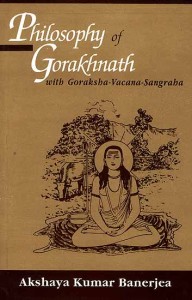
MAHAYOGI YOGACHARYA GURU GORKHNAHT JI AADESH AADESH .
BY MR . VISHAWAJEET SING JI
> HATHA YOGA AND THE MEANING OF TANTRA <
AADESH AADESH ,
MAHAYOGI ,YOGACHARYA ,GURU GORKH NATH JI
However, great Yogis such as Gorakshanath are following the system of Sadanga Yoga which has been stated by him in his book Goraksha Paddhati 1.7. This System avoids Yamaand Niyama. The justification given by those Yogis is that if you obtain mastery in meditation, your whole lifestyle gets changed in such a way, that you automatically start following the Yama and Niyamawhich are the necessary rules and individual rules of conduct respectively. These six aspects of Yoga are:
- Physical Postures
- Pranayama
- Pratyahara
- Dharana
- Dhyana
- Samadhi
2. According to the Nath Cult it is most important that the aspirant should purify his body completely. This has been stated in detail in Gheranda Samhita l.10-11-12. This is a total purification of all important and vital organs of the body such as stomach, small intestines, large intestines, nasal passage, food pipe, eyes, cars, throat, etc. After this the cult says that the aspirant is in a position to undertake all the steps of Yoga. In Patanjali’s Yoga Sutras this preparation of initial background is not mentioned.
3. The next step (in other Yoga systems) is the learning of physical postures. However, after learning all the important postures, the aspirant has to practise the most essential posture viz. Siddhasana or Vajrasana. For all the future Sadhanas this is considered to be the basic and important posture. The detailed description of this posture is given by Jnaneshvara in his sixth chapter of Jnaneshvari and also by a number of books of Nath Cult. They say that this posture is a must for all the aspirants. However, Patanjali says that you can sit in any convenient posture you like. Hence he gives the Sutra „Sthira-sukham asanam.“
4. The importance of a Guru or Master is maximum in Nath cult. Their every book or Shastra starts by remembering or bowing with great reverence and respect to the Guru Adinath or Shiva or Shankara. Jnaneshvari also starts like this by saying „Om Namoji Adya.“ This importance is not given to Guru in Patanjala Yoga Darshana.
5. The Nath cult says that the human body consists of certain most essential centres or vital points and voids (Akasha). (8) Every aspirant has to know and understand these things. They say that one who is not aware of these essential centres is not a Yogi. They are six Chakras, sixteen vital points, two Laksyas (concentration points), five voids, all situated within the human body. Such type of discussion is not found in Patanjala Yoga Darshana.
6. Nath cult says that the human body is just like a beautiful house which is having nine doors. It is formed out of five essential elements and each element is having its own deity. The nine openings are two eyes, two nostrils, two ear holes, mouth, excreta outlet, and sex organ. The deity of Earth is Brahma, of water is Vishnu, of fire is Rudra, of air is Ishvaraand of space is Sadashiva. Every aspirant has to understand these things. In Patanjala Sutras we do not find this.
7. The Nath Panth, in their various books as mentioned above, gives a detailed description of the seven chakras, their exact location in the body, their properties and functions etc. Jnaneshvara has not given the description of these chakras for the reason that he wanted to restrict his interpretation to the verses of Bhagavad-Gita. At the base of the spinal cord and at the centre of the line which connects sex organ and the excreta outlet is situated the first chakra which is known as Muladhara Chakra. Slightly above the sex centre and below the naval centre the second chakra is situated which is known as Svadhisthana Chakra. The third is situated near the naval centre and is called Manipura. The fourth one is situated near the heart centre and is known as Anahata Chakra. The fifth is situated at the throat centre and is known as Visuddha Chakra. It must be noted that all these chakras are situated in the Shushumna Nadi which passes through the spinal cord, which again passes through Vertebral Column. These are extremely subtle points and may not be structural and cannot be located by any sophisticated instrument available. These were actually ‚observed‘ and seen by the great Rishis in the stage of Samadhi. Here come the limitations of modern science. The sixth chakra is situated on the forehead and between the centre of the two eyebrows. This is known as Ajna Chakra. The seventh and the last chakra is situated in the centre of the brain in its uppermost portion. Patanjali does not mention any such thing in his Yoga Sutras.
8. According to Nath Cult there are 72.000 nerves in the body of human beings. Out of these ten Nadis are important. Out of these three are most important. They are known as Ida, Pingula and Shushumna. Ida is known as Chandra Nadi and is passing through the left side of the vertebral column. Pingula is known as Surya Nadi and is passing through the right side of the vertebral column. Shushumna Nadi is passing through the spinal cord and is known as Agni Nadi. Patanjali’s Yoga Sutras do not mention all this. He does mention a few Nadis like Kurma Nadi. But the detailed description is absent.
9. The concept of Prana has been studied in maximum details in Nath Cult. They say that in the human body there are ten different types of air or Vayus , which are known as Prana, Apana, Samana, Udana, Vyana, Naga, Kurma, Krikala, Devadatta and Dhananjaya. Each one is situated in a specific part of the body. Each one is having specific purpose and function in the body. When we take the air inside our body, it gets bifurcated into ten branches. This is just like a stream of water which starts from the Himalayan Mountains and gets bifurcated into several branches and each branch becomes a river and is given a separate name. Present medical science is not in a position to locate these ten different types of airs. However, our ancient Yogis have actually ’seen‘ these different streams of air inside our body. This type of description is not found in Patanjala Sutras.
10. When we breathe in there is a subtle sound which is known as ‚So‘ and when we breathe out there is a subtle sound which is known as ‚Ham‘. Everyone can experience this with slight practice. This sound of ‚Soham‘ is continuously going on with every breathing. In a period of one day, that is twenty-four hours, we take 21.600 breathings. That means this type of sound which is known as Mantra, is being continued in our body for that many number of times (21.600). If the aspirant observes this mentally and consciously, this becomes a great Sadhana. This Sadhana is being given very great importance in the Nath Cult. This is not found in Patanjala Yoga Sutras (PYS).
11. The most important aspect of the Yoga Sadhana of Jnaneshvara is the activation of the Kundalini Shakti. This is a Tantric Sadhana of the Nath Cult. Jnaneshvara has given a detailed account of this process in his sixth chapter. This is a practical application of the philosophy of Nath Panth. They say that the whole universe is created out of the energy of Shiva or Mahashiva or Adinatha. They call it Shakti or cosmic energy. This energy is occupying the whole universe. The smallest portion of this energy is known as Kundalini, and the energy which is present in the entire universe is known as Maha Kundalini. This energy is present in human beings in potential form (Supta Shakti). The Yogis who have experienced this energy, say that this is like a serpent and is situated at the end of the Shushumna Nadi in a coiled form, in three and a half coils, position. This also is in line with their philosophy which says „Bramhandi te Pindi“. This means that whatever exists in the universe also exists in the human being in the subtle form. Nath Cult and their great masters like Gorakshanath have devised various ways and means to activate this energy. Saint Jnaneshvara has described one method of activating this energy. This method has been stated in almost all the books of Hatha Yoga and Natha Panth and some Upanishads. The detailed description is available in the sixth chapter of Jnaneshvari.
This energy can also be activated by Mantra Yoga, Laya Yoga and Bhakti Yoga. That is why we find in Jnaneshvari all these systems of Upasana.
The ultimate stage of realisation or Moksha as per this colt is the union of Shakti with Shiva. Hence the aspirant initiated in this cult has to activate this energy and allow this energy to go through all the six chakras gradually. The place of Shiva is considered to be in the last chakra which is known as Sahasrara. In the ultimate stage, Sadhaka has to transfer this energy to this last chakra. This is supposed to be the point of union of Shakti with Shiva. One who is successful in this process, is supposed to be a great Yogi. A number of spiritual powers known as siddhis are at his disposal in that stage. A number of examples are available in the ancient Shastras about the Yogis, who were successful in obtaining this highest stage. Jnaneshvara had experienced the above union with Shiva and hence he is known as Maha Yogi. In PYS we do not find anything about Kundalini Shakti.
12. In Nath cult there is a great importance of a Gun or Master. He is given the same importance as is given to their ultimate Guru Adinath. That is why Jnaneshvara is giving maximum importance to his Guru Nivrittinath and is mentioning his name in Jnaneshvari at a number of places. Not only that, he gives the entire credit of writing this book to Nivrittinath. Their philosophy says that the aspirant can get the ultimate experience of truth or Shiva only with the continuous guidance of Guru or the Master. We find that every book of Nath Panth starts after bowing to Guru.
13. In this cult we find a mystic and esoteric act of the transfer of spiritual energy from the master to the initiated aspirant and the act is known as Shaktipata. With the tremendous powers of the master, he can activate the Kundalini energy of the disciple. This transfer, he can do by touching a specific part of his body or simply by looking at him. This transfer of energy can be done on the aspirant who is at a great distance from the master. This is a peculiar mystical act. After the transfer of energy, the aspirant experiences a number of supernatural things, a tremendous flow (of liquid) light, etc. However, those scholars who are really anxious, should go through the book Awakening of Kundalini written by Pandit Gopi Krishna, who had undergone all these experiences before about twenty-five years in Kashmir. The concept of Shaktipata is not found in PYS.
14. This cult gives a great importance to the practice of certain physical postures known as Mudras. They are useful in meditation and also in the activation of Kundalini energy and the six chakras. Hence every aspirant has to learn these Mudras. The ancient texts say that such Mudras arc twenty-five. Out of these ten are most important. With the practice of Mudras the aspirant is in a position to get rid of any and every disease and can acquire a number of supernatural powers. Because of these multiple advantages, the aspirant is taught these postures and afterhe achieves this experience, he is taught Pranayama. Mudras arc nowhere mentioned in PYS.
15. There is a difference between the Dhyana-meditation of Patanjali and Jnaneshvara. Patanjali gives the definition of Dhyana as per Sutra No. III.1 and III 2 which are as under. The aspirant has to concentrate on specific or vital part of the body or on some external point. This process is known as Dharana. When the aspirant gets success in the concentration on that particular point, for a sufficiently long time, it becomes a Dhyana. For the concentration on that particular point, the aspirant has to use his mind. However, in Kundalini Yoga, the aspirant has not to use his mind at all. He has to practise Kumbhaka, wherein the function of mind totally stops. Instead of concentrating on any particular point, the aspirant has to activate the Kundalini energy. This is a much superior way. This opinion has been confirmed by Sir John Woodroffe, in his book The Serpent Power on page No. 314 and 315 of the eleventh edition, which the learned scholars and philosophers can refer to any time.
16. Patanjali gives a broad division of Samadhi, which is termed as SamprajnataSamadhi and Asamprajnata Samadhi. However, the stage of Samadhi has been studied in details by the Nath cult and which is followedby Jnaneshvara in toto. Nath cult has categorised Samadhi in six types which are known as I ) Dhyana Yoga Samadhi, 2) Nada Yoga Samadhi, 3) Rasananda Yoga Samadhi, 4) Laya yoga Samadhi, 5) Bhakti Yoga Samadhi, and 6) Raja Yoga Samadhi. How each Samadhi can be experienced is also discussed in details. Scholars and philosophers can refer chapter seven of Gheranda Samhita which gives the entire description.
To conclude, I would like to state that both these systems of Yoga are different. The reason is obvious. Their philosophical base is altogether different. That is why the Yoga of Nath Panth accommodates Hatha Yoga, Kundalini Yoga, Mantra Yoga, and Bhakti Yoga. This Yoga Philosophy is therefore multi-dimensional. Besides the results here are very fast. This has been promised by Gorakshanath in his book. However, it is advisable that the practices of this Yoga should be undertaken under an able and experienced master.
To end the paper, I would like to quote the verse No. IV.114 from Hatha Yoga Pradipika. It says that till you are not in a position to activate the Kundalini energy, till you are not in a position to have perfect control over your pranic force, till you are not in a position to clear the path of Shushumna Nadi, all your knowledge is external, futile and full of ego. It is only an exercise of talking and nothing else. Hence he says that this is a process which has to be experienced only.
References
- Jnanesvari by Sakhare Maharaj.
- Goraksa-paddhati by Gorakshanath.
- Gheranda Samhita – Commentary by Shree Swamiji Maharaj.
- Hatha-yoga-Pradipika by Shree Swatmarama Yogi
- Patanjala Yoga (Sutra) Pradipa by Swami Omananda Tirtha.
- Patanjala Yoga Darsana by K.K. Kolhatkar
- Yoga Yajnavalkya
- Siddha-Siddhanta-Paddhati by Gorakshanath
- Shiva-Samhita – Commentary by Dr. K.R. Joshi
Dein Ayurveda Net, > svadhyaya < , Articles:
DIE VEDEN, PURANAS, (free) DOWNLOAD´s

> UNESCO PUBLISHING – PURANAS, YOGA <
(or the Bhagavat Purana)
The Vedas are among the oldest sacred texts. The Samhitas date to roughly 1500–1000 BCE, and the „circum-Vedic“ texts, as well as the redaction of the Samhitas, date to c. 1000-500 BCE, resulting in a Vedic period, spanning the mid 2nd to mid 1st millennium BCE, spanning the Late Bronze Age and the Iron Age.The Vedas (Sanskrit वेद véda, „knowledge“) are a large body of texts originating in Ancient India. Composed in Vedic Sanskrit, the texts constitute the oldest layer of Sanskrit literature and the oldest scriptures of Hinduism. The class of „Vedic texts“ is aggregated around the four canonical SaṃhitÄ�s or Vedas proper (turÄ�ya), of which three (traya) are related to the performance of yajna (sacrifice) in historical (Iron Age) Vedic religion: 1.the Rigveda, containing hymns to be recited by the hotṛ or chief priest; 2.the Yajurveda, containing formulas to be recited by the adhvaryu or officiating priest; 3.the Samaveda, containing formulas to be chanted by the udgÄ�tṛ. The fourth is the Atharvaveda, a collection of spells and incantations, stories, predictions, apotropaic charms and some speculative hymns. Read More: >HERE <
Das Wort Veda heißt zwar einfach übersetzt „Wissen” oder auch „Wissenschaft”, in der indischen Kultur hat dieses Wort jedoch eine vielfältige Bedeutung und vielfältige Bezüge.
Mit Veda im engeren Sinne bezeichnet man sehr alte Textsammlungen, die zu den ältesten sprachlichen Überlieferungen der Menschheit gehören und den Hindus heilig sind.
Im engeren Sinne zählt man vier Veden:
- den Rigveda,
- den S�maveda,
- den Yajurveda und
- den Atharvaveda.
Diese vier Veden, die zu großen Teilen schon um etwa 1000 v. Chr. ihre heutige Gestalt hatten, enthalten Hymnen und Formeln, die bei großen religiösen Ritualen verwendet werden, indem sie rezitiert, gesungen oder gesprochen werden.
Der Wortlaut der Veden, insbesondere des Rigveda, war in Indien so heilig, dass über Generationen große Anstrengungen darauf verwendet wurden, diesen Wortlaut korrekt zu überliefern. Es ist eine einzigartige Kulturleistung der vedischen Schulen, dass wir heute – nach über dreitausend Jahren – noch genau wissen (und hören), wie diese Hymnen korrekt ausgesprochen wurden ! Noch heute dienen vedische Hymnen rituellen Zwecken, wie zum Beispiel bei der hinduistischen Hochzeitszeremonie.
Nach traditioneller Auffassung sind diese Veden nicht menschlichen Ursprungs, sie sind vielmehr von großen Weisen (den Rishis) „gehört” worden. (Siehe Beitrag “RISHI”) im Anschluss auf diesen Artikel). Den ganzen Beitrag lesen : > HERE <
DIE VEDEN & AYURVEDA, EIN ÜBERBLICK
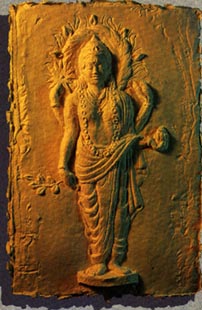
> CHARAKA SCHOOL OF AYURVEDA <
> AYURVEDA & CHARAKA SAMHITA <
>> Books from „Kenneth G. Zysk“ <<
Ayurveda (DevanÄ�garÄ�: आयुर्वेद, the ’science of life‘) is a system of traditional medicine native to India and practiced in other parts of the world as a form of alternative medicine. In Sanskrit, the word Ayurveda consists of the words Ä�yus, meaning ‚life‘, and veda, meaning ‚related to knowledge‘ or ’science‘. Evolving throughout its history, Ayurveda remains an influential system of medicine in South Asia. The earliest literature of Ayurveda appeared during the Vedic period in India. The Sushruta Samhita and the Charaka Samhita were influential works on traditional medicine during this era. Ayurvedic practitioners also identified a number of medicinal preparations and surgical procedures for curing various ailments and diseases. Ayurveda traces its origins to the Vedas—the Atharvaveda in particular—and is connected to Hindu religion.The Sushruta Samhita of Sushruta appeared during the 1st millennium BC.
Ayurveda, Rishis, die 4 VEDEN (Rgveda, Samaveda, Yajurveda, Arthavaveda) und deren Entstehung:
Der Begriff Ä�yurveda ist ein Wort aus dem Sanskrit, der altindischen Hochsprache, und heißt einfach übersetzt „Wissenschaft vom Leben“ oder „Wissen von der Lebensspanne“. Durch diese Bezeichnung versteht sich, dass im Ä�yurveda nicht nur Krankheiten behandelt werden. Als „Wissenschaft vom Leben“ hat Ä�yurveda ein zweifaches Ziel.
> Dein Ayurveda Net ….. “ Ayurveda “ <
> Meet Pentavox Herbals, Ayurveda (Biggest Ayurveda Group on fb) <
> Meet many Ayurveda Groups and Friends at facebook <
> Meet Dhanvanthari Groups and Friends at facebook <
> Meet NaturalNews.com at facebook <
NaturalNews.com is an independent news resource that covers the natural health and wellness topics that empower individuals to make positive changes in their personal health. NaturalNews offers uncensored news that allows for healthier choice.
NAVARATRI – NINE DIVINE NIGHTS
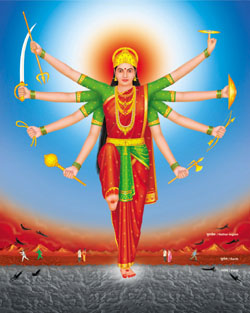
>> Navaratri Festival Campaign <<
DIE 9 NÄCHTE DER GROSSEN GÖTTIN NAVDURGA
(19.09.2009, in India and everywhere)
Navaratri (Marathiनवरात्रि,Sanskrit: नवरात्रि, Bengali: নবরাত্রি, Tamil: நவராத்திரி, Kannada:ನವರಾತ್ರಿ) is a Hindu festival of worship and dance. The word Navaratri literally means nine nights in Sanskrit; Nava meaning Nine and Ratri meaning nights. During these nine nights and ten days, nine forms of Shakti/Devi i.e. female divinity are worshipped.
Durga als Dreiheit der Natur – Göttliche Mutter Durga, welche in allen Geschöpfen in Form von Intelligenz, Barmherzigkeit & Schönheit existiert. Sie ist die Gemahlin von Shiva, welcher das Universum erschafft, erhält & zerstört. Ein Gruß an die Göttliche Mutter Durga, welche in allen Geschöpfen in dieser Form allgegenwärtig ist.
Durga Navaratri beginnt am ersten und endet am zehnten Tag nach Neumond des Monats Aswayuja (September/Oktober). Das Fest erinnert an den Sieg von Durga über Mahishasura, den büffelköpfigen Dämon. In Bengalen wird ihr Bild neun Tage lang verehrt und dann dem Wasser übergeben. Der zehnte Tag heißt Vijaya Dasami oder Dussera (der „zehnte Tag“). Am zehnten Tag werden in den Dörfern und Städten Prozessionen mit einem Durga-Bildnis abgehalten.
YOGALEHRER IM HINDUISMUS
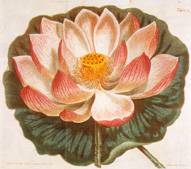
YOGALEHRER IN INDIEN
oder: “ YOGI in INDIEN „
Mit insgesamt 390 Versen stellt die Yoga-Shikha („Krone des Yoga“)-Upanishad die umfassendste Yoga-Upanishad dar. Sie besteht aus sechs Kapiteln, deren letztes einmal eine selbstständige Abhandlung gewesen zu sein scheint. Dieses > Shaiva-Werk < soll, ähnlich wie die > TANTRAS <, den spirituellen Suchern dienen, die mit den Schwierigkeiten des dunklen Zeitalters (kali-yuga) zu kämpfen haben.
Ursprung Ayurvedas innerhalb der Kulturen
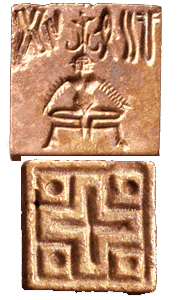
> www.harappa.com <
> Harappan Civilisation < > Die Indus Kultur (Harappa-Kultur) <
Am Fusse des Himalaya Gebirges bzw. im Flusstal des Indus, im Norden Indiens, lebten vor ca. 5000 Jahren eine wohlhabende Gesellschaft die der „Göttlichen Mutter“ diente.
Yoga, Ayur-Veda und Siddha Medizin
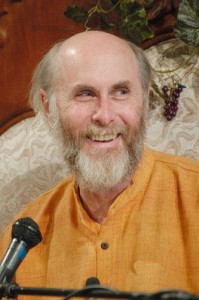
Tabellarische Übersicht der Veden
Mit Veda (Sanskrit wörtl.: „Wissen“) werden heiligen Schriften bezeichnet. Den Kern des Veda bilden die Texte der Shruti, das sind von Rishis (Weisen) „gehörte“ Texte, also Offenbarungen.
Da es sich um heilige Texte handelt, deren exakte Rezitation wichtig war, wurden sie mit großer Genauigkeit mündlich überliefert. Das Wissen durfte nur an auserwählte Schüler weitergegeben werden. Erst um das 5. nachchristliche Jahrhundert wurden sie niedergeschrieben. Noch heute gibt es Brahmanen, die die Veden auswendig können. Die Bedeutung des Veda ist auch heute noch sehr groß. Es gibt vier Veden: Rigveda, Samaveda, den weißen und den schwarzen Yajurveda und den Atharvaveda.
Mitunter werden die Agamas, aus denen sich die Tantra-Lehre entwickelt hat, als der fünfte Veda bezeichnet.
Die Begriffe „Veda“ und „vedisch“ werden in Indien auch im weiteren Sinne mit der Bedeutung „Wissen“ verwendet und beziehen sich nicht nur auf Texte, sondern auf das religiöse und weltliche Wissen schlechthin.
Die Tradition der vedischen Gesänge wurde von der UNESCO unter die Meisterwerke des mündlichen und immateriellen Erbes der Menschheit aufgenommen.
veda & shastra – klassische Sanskritliteratur
Es gibt vier brahmanische Schriften: VEDA, SMRITI, PURANA, AGAMA. Wobei manche die agamas da sie als Spätwerk gelten zu der vedischen Literatur zählen,- oder nicht.
Weiters unterscheidet man zwischen sechs spirituellen und vier weltlichen Titeln, die da sind: 1) Shruti, 2) Smriti, 3) Itihasa, 4) Purana, 5) Agama und 6) Darshana; und 1) Subhashita, 2) Kavya, 3) Nataka und 4) Alankara.
Die Agamas sind theologische Abhandlungen und praktische Handbücher der Verehrung. Die Agamas beinhalten Tantras, Mantras und Yantras.
Yoga, Literatur, eine Übersicht
Die klassische Literatur des Yoga – Übersicht
Die Urelemente des Yoga entstammen frühesten Epochen der Menschheitsentwicklung. Über yogaähnliche Praktiken geben die ältesten Teile der Veden Auskunft. Sie erwähnen und beschreiben asketische Methoden und Verzückungserlebnisse von noch wenig differenzierter Natur. Es sind vor allem zwei Texte, die Aussagen über diese frühe Stufe der Yogaentwicklung machen: der Rigveda und das Vratya-Buch des Atharvaveda.
Das Yoga-Schrifttum der nachfolgenden Zeiten ist mannigfaltig. Die yogische Idee findet ihren Ausdruck in allen Gattungen der indischen Literatur. Der Yoga erfährt sowohl in den Epen als auch in den Puranas, Agamas und Shastras eine ausführliche Behandlung. Eine kleine Auswahl der wichtigsten Yoga-Schriften soll nachfolgend gegeben werden.


